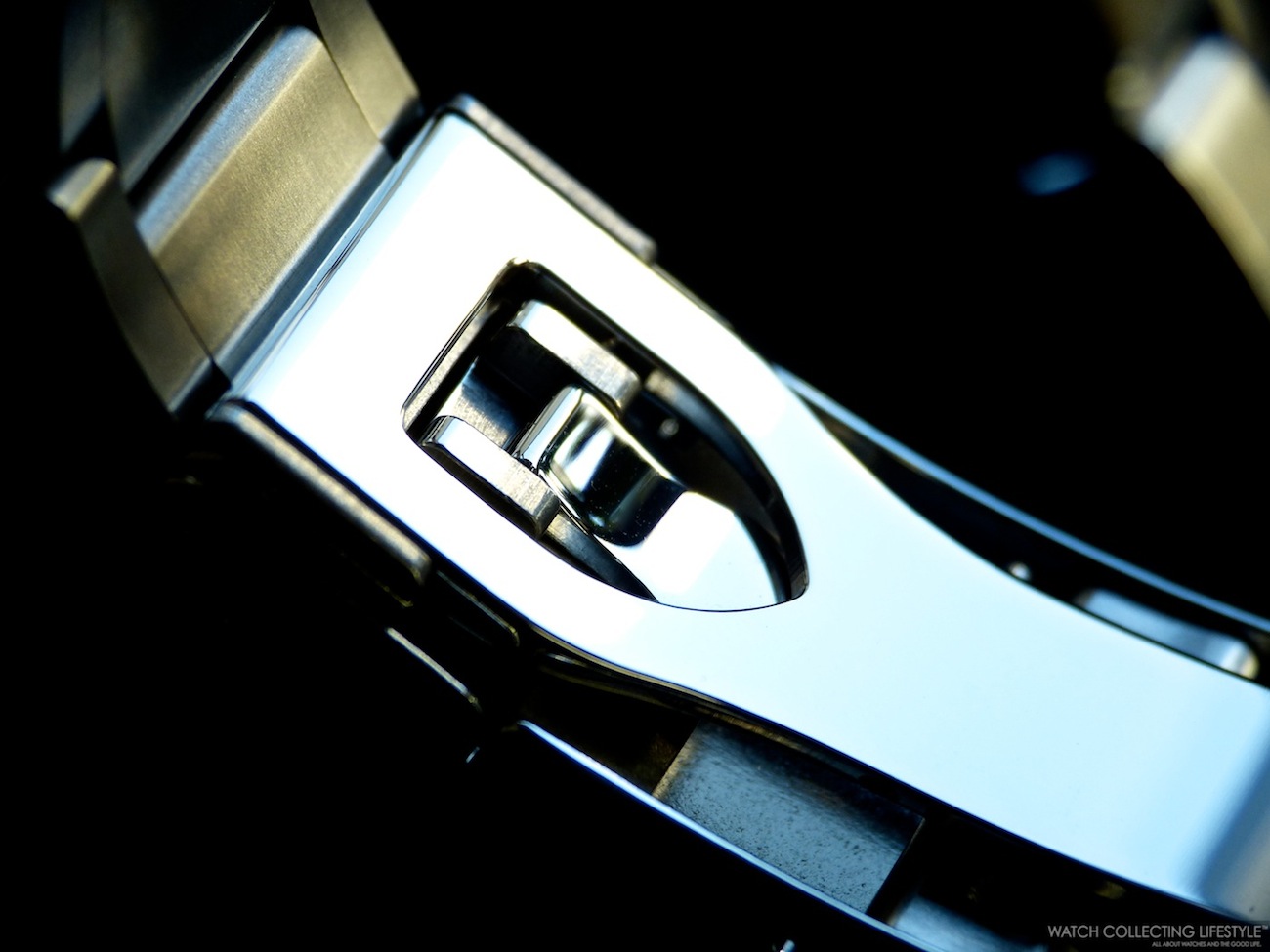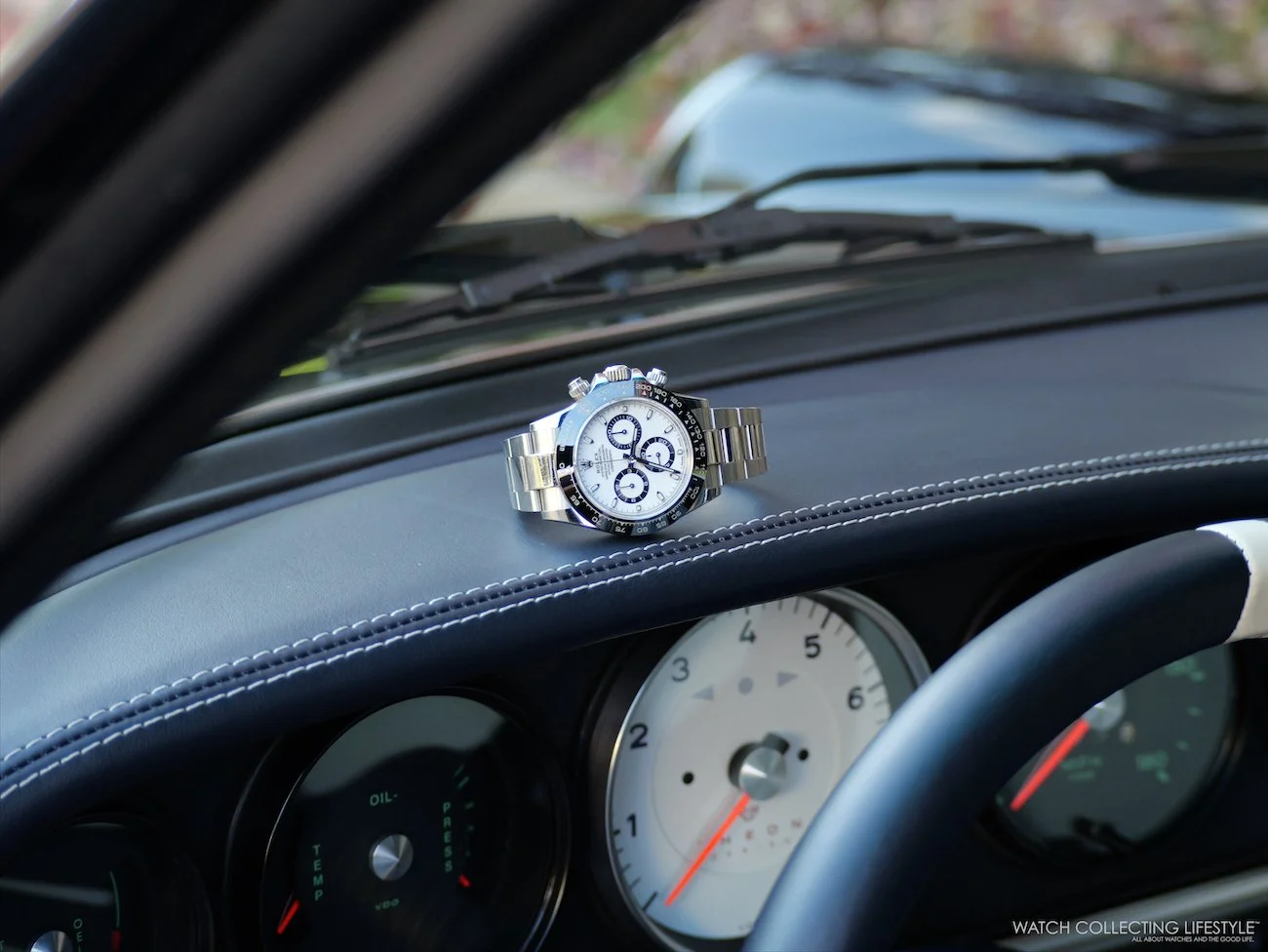Since the moment Romain Jerome unveiled this surprising timepiece earlier this year, we wanted to do a hands-on review with live pictures of it. There's nothing like appreciating timepieces under natural light and writing about them after holding them and wearing them. Stock images are wonderful, but they will never convey the true essence of a timepiece like live photography under natural light.
The Romain Jerome Moon Orbiter R.J.M.TO.MO.001.01 is everything but conventional. This watch is a fresh tribute to the conquest of space, equipped with a flying tourbillon featuring a unique three-dimensional architecture. Fitted with an over-sized stainless steel case measuring 48.5 mm wide, 44.5 mm long and 20 mm thick, this Romain Jerome features DNA steel elements from the Apollo 11 space shuttle.
The massive case on this watch features very intricate details such as the screws that attach the lugs to the case, the cylinder system applied to these lugs for optimal wrist comfort and the alternating perfect satin-brushed and highly polished areas. This cylinder system looks as if Romain Jerome had installed mini shock-absorbers to the area where the lugs meet the case. To round out the very interesting look of this timepiece, the watch features a rubberized crown with perforations that is very unique and visually appealing.
This very unconventional watch with a rectangular shape, features an amazing texturized black dial containing 'moon dust', integrated x-shaped traverses, circular satin-brushed counters around the flying tourbillon located at 9 and around the hour/minute sub-dial with cut out Arabic numerals located at 3 o'clock. Its oxidized black and satin-brushed hands provide perfect contrast with their red lacquered accents against the dark grey texture on the dial that resembles small moon craters.
In addition to the already mesmerizing dial, the watch is equipped with a small window outside the area of the dial at 6 o'clock, where the power reserve indicator is located. The power reserve indicator features engraved 'plus and minus' signs as well as a lacquered red hand for optimum readability.
The amazing flying tourbillon can be appreciated in its full splendor via the front, the display case back but also from the side via a strategically placed sapphire crystal on the case band. As a reference, there are five sapphire crystals with anti-reflective treatment on this watch. One on the case band at 9, one at 12, one at 6 o'clock, one on the front and one on the display case back. The amazingly beautiful automatic Romain Jerome calibre RJ3000-A can be fully appreciated via the display case back. This calibre composed of 32 jewels beats at a frequency of 28,800 vph providing a power reserve of 42 hours. The calibre is a real treat for the eyes.
This impressive watch is fitted with a black alligator leather strap with pin buckle that is very comfortable and nicely finished. We would've expected a deployant buckle on a watch like this, but still it is not a deal breaker.
This Romain Jerome Moon Orbiter is available in a limited edition of 25 pieces and as expected, even though the watch wears quite comfortably thanks to the cylinder system on the lugs, the watch wears really large and protrudes to the point where it is impossible to tuck it under the cuff of a shirt. But well, when you are wearing something as unique and impressive as this watch, why would you even consider hiding it under your cuff. Don't you think? If you have a wrist smaller than 7" we really think you might as well look elsewhere, as this watch is made for those that can handle it.
Sticker Price $115,000 USD. For more info on Romain Jerome click here.
















































